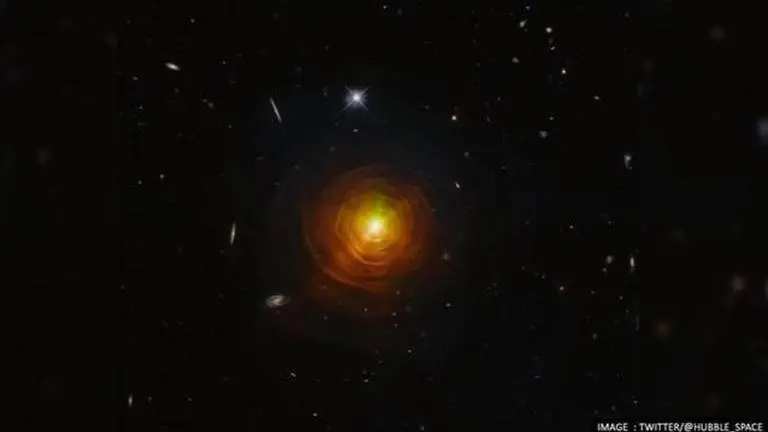Updated 29 October 2021 at 03:02 IST
'Halloween Treat': Hubble shares spooky image of dying star 400 light-years away
Treating astronomy geeks ahead of Halloween, the Hubble Space Telescope on October 28 released a spooky yet exciting image of the carbon star CW Leonis.
- Tech News
- 2 min read

Treating astronomy geeks ahead of Halloween, the Hubble Space Telescope on October 28 released a spooky yet exciting image of the carbon star CW Leonis. Lying in the constellation Leo, the baleful orange eye of a star glaring from behind a shroud of smoke is located roughly 400 light-years from Earth.
1/ 🎃 Who is that, watching you, with its baleful orange eye glaring from behind a shroud of smoke? Why, it’s the carbon star CW Leonis, Hubble’s treat for #Halloween!
— HUBBLE (@HUBBLE_space) October 28, 2021
🔗 https://t.co/dsafy457lL
Credit: @ESA / @Hubble_Space / @NASA , T. Ueta, H. Kim pic.twitter.com/sUSB1dZyIr
Sharing the image on Twitter, Hubble revealed that the dense clouds of sooty gas and dust engulfing this dying star were created as the outer layers of CW Leonis itself were thrown out into the void. Over the years, Hubble has captured several similar spooky images from all corners of the universe but Hubble personally likes this new image as it said:
"Along with CW Leonis’s smoky veil, the vibrant orange and green tints of this image make it a fitting celebration of Halloween. This year’s image resembles a single, baleful eye of cosmic proportions glaring out from within a cloud of smoke."
How do stars die?
While describing the above image, Hubble explained that when small to intermediate-mass stars run out of fuel (hydrogen) in their cores, the outward pressure that balances the gravity within their cores falls out of equilibrium, causing the star to collapse. Following the collapse, the shell of plasma surrounding the core becomes unimaginably hot causing fusion of the remaining hydrogen. This fusion generates such heat that the outer layers of the star expand and turn it into a bloated red giant. Currently, this red giant star with a carbon-rich atmosphere is under the aforementioned phase of its life and is surrounded by a dense pall of sooty dust.
Interestingly, CW Leonis is the closest carbon star to Earth and is giving astronomers a chance to understand the interaction between the star and its surrounding envelope. "Astronomers speculate that gaps in the shroud of dust surrounding CW Leonis may allow these beams of starlight to pierce through and illuminate dust further from the star. However the exact cause of the dramatic changes in their brightness is as yet unexplained," Hubble stated. Although it added that detailed Hubble observations of CW Leonis taken over the last two decades also show the expansion of ring-like threads of ejected material around the star.
Advertisement
Image: Twitter/@Hubble_space
Published By : Harsh Vardhan
Published On: 29 October 2021 at 03:05 IST
